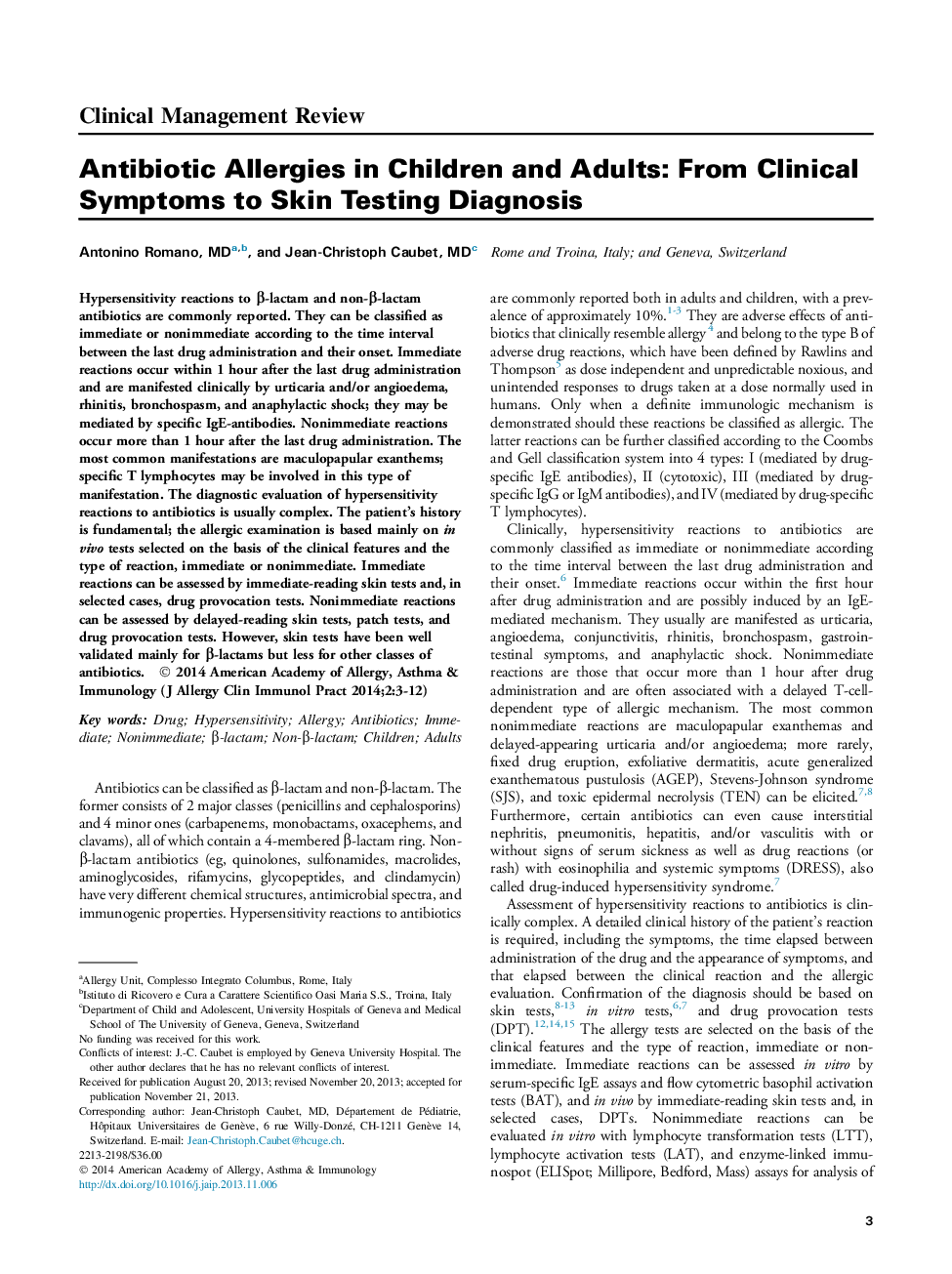| Article ID | Journal | Published Year | Pages | File Type |
|---|---|---|---|---|
| 6069173 | The Journal of Allergy and Clinical Immunology: In Practice | 2014 | 10 Pages |
Abstract
Hypersensitivity reactions to β-lactam and non-β-lactam antibiotics are commonly reported. They can be classified as immediate or nonimmediate according to the time interval between the last drug administration and their onset. Immediate reactions occur within 1 hour after the last drug administration and are manifested clinically by urticaria and/or angioedema, rhinitis, bronchospasm, and anaphylactic shock; they may be mediated by specific IgE-antibodies. Nonimmediate reactions occur more than 1 hour after the last drug administration. The most common manifestations are maculopapular exanthems; specific T lymphocytes may be involved in this type of manifestation. The diagnostic evaluation of hypersensitivity reactions to antibiotics is usually complex. The patient's history is fundamental; the allergic examination is based mainly on in vivo tests selected on the basis of the clinical features and the type of reaction, immediate or nonimmediate. Immediate reactions can be assessed by immediate-reading skin tests and, in selected cases, drug provocation tests. Nonimmediate reactions can be assessed by delayed-reading skin tests, patch tests, and drug provocation tests. However, skin tests have been well validated mainly for β-lactams but less for other classes of antibiotics.
Keywords
Related Topics
Life Sciences
Immunology and Microbiology
Immunology
Authors
Antonino MD, Jean-Christoph MD,
